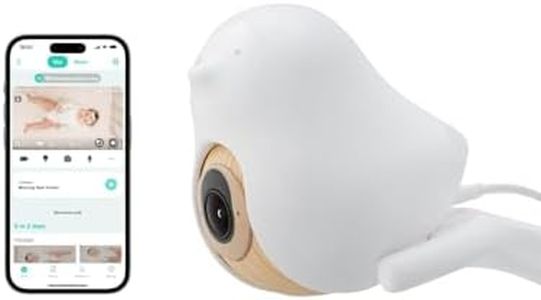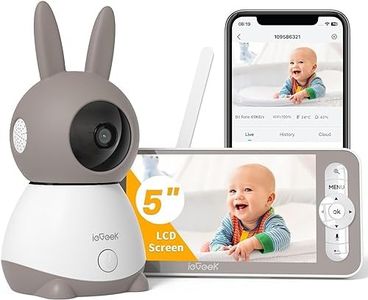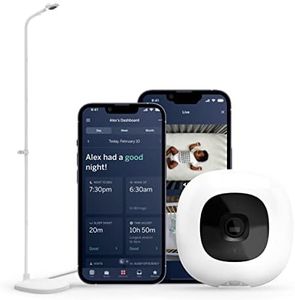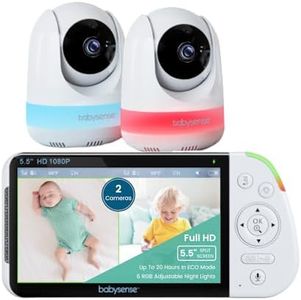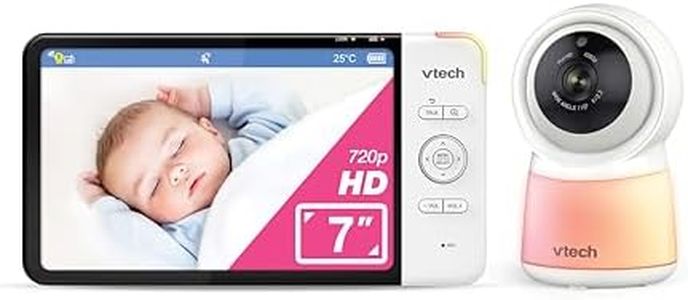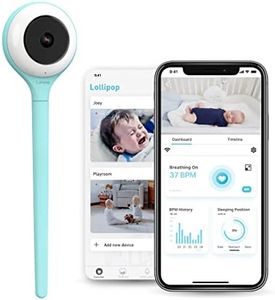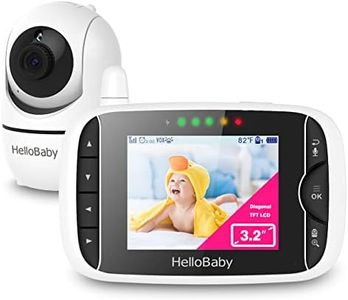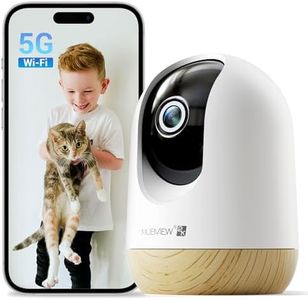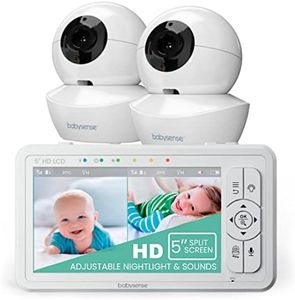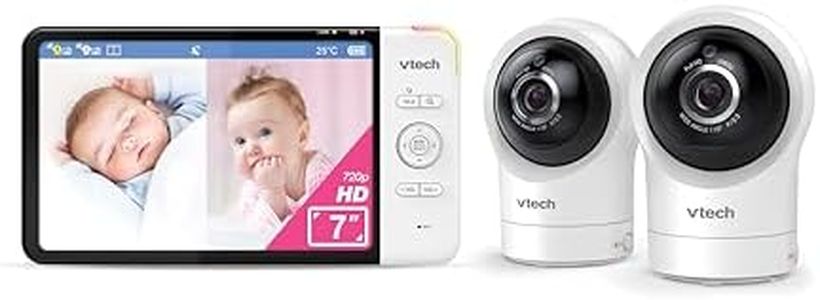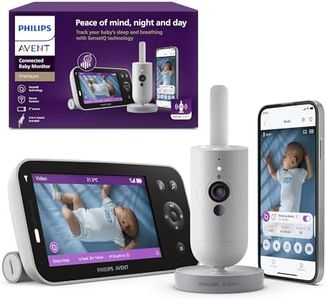We Use CookiesWe use cookies to enhance the security, performance,
functionality and for analytical and promotional activities. By continuing to browse this site you
are agreeing to our privacy policy
10 Best Bluetooth Baby Monitor
From leading brands and best sellers available on the web.Buying Guide for the Best Bluetooth Baby Monitor
Choosing a Bluetooth baby monitor can make a big difference in keeping an eye (and ear) on your baby with convenience and peace of mind. When picking one, it's important to think about how you'll use it, where you'll use it most often—such as at home or while travelling—and which features will actually give you the reassurance you need without making things too complicated. Understanding the key specifications can help you decide which baby monitor will fit your daily life and deliver that critical sense of security.RangeRange refers to how far the monitor's signal will reach between the baby unit and the parent unit—essentially, how much distance you can have between the two before the connection drops. This is crucial because a short range means you’ll need to stay close to your child’s room, while a longer range gives you flexibility to move freely around your home or even step outside briefly. Typically, ranges can be divided into short (up to 100 feet, good for small apartments), medium (100–300 feet, suitable for medium-sized homes), and long (300 feet or more, ideal for larger homes or when you need to be in the garden or garage). Think about the size of your living space and where you expect to use the monitor most often. If you want to use it while working in multiple rooms or outdoors, choose a model with a longer range.
Audio and Video QualityAudio and video quality determine how clearly you can hear or see your baby. Audio-only monitors usually focus on clear sound transmission, while video monitors provide live visuals as well. Audio clarity can range from basic (you hear your baby but with some background noise) to high-definition (clear, detailed sound with noise filtering). Video quality can range from standard definition (good enough to see basic movements) to high definition (crisp, detailed images even at night). If you just need to hear cries or coos, simple audio is likely enough. If you want visual reassurance—like checking if your baby is rolling over or missing their blanket—go for clearer video.
Battery LifeBattery life tells you how long the parent unit or the monitor itself will last between charges. Some monitors plug in, while others use rechargeable or replaceable batteries. Longer battery life means less hassle—especially overnight or if you want to carry the receiver around during the day. Short battery life (a few hours) might be manageable for short naps, while longer battery life (8-12 hours or more) is best for all-night monitoring or portable use. If you plan to move around a lot, or want peace of mind during nighttime, prioritize a longer-lasting battery.
Connectivity and InterferenceConnectivity and interference refer to how stable the monitor’s signal is, and how often you might experience drops or interruptions from other wireless devices around your home. Bluetooth monitors are generally less prone to interference than Wi-Fi but can still be affected by distance, thick walls, or other nearby electronics. Some offer features like frequency hopping to minimize drops, and some are best in environments with little electronic noise. If you live in an apartment, or have lots of other Bluetooth or wireless devices, look for models that highlight reliability and minimal interference.
Privacy and SecurityPrivacy and security matter because baby monitors transmit signals that could, in rare cases, be intercepted by others. Bluetooth monitors are generally considered more secure than Wi-Fi models, as they use direct short-range communication, but features like encrypted signals offer added peace of mind. Simpler models with no internet connectivity keep things highly private. If you’re especially worried about privacy, select a monitor that clearly states it uses secure, encrypted signals and doesn't connect to the internet.
Extra FeaturesExtra features can include things like temperature sensors, two-way talk (so you can soothe your baby with your voice), lullabies, nightlights, or even motion sensing. These features add convenience and comfort, but think about which will actually be useful for your daily routine. If your baby’s room needs careful temperature control, a monitor with temperature alerts may help. If you want to reassure your baby or talk without entering the room, two-way talk is a good add-on. Focus on features you’ll use regularly, rather than getting distracted by lots of bells and whistles.
